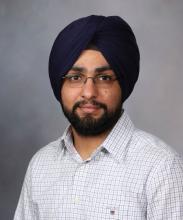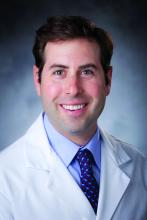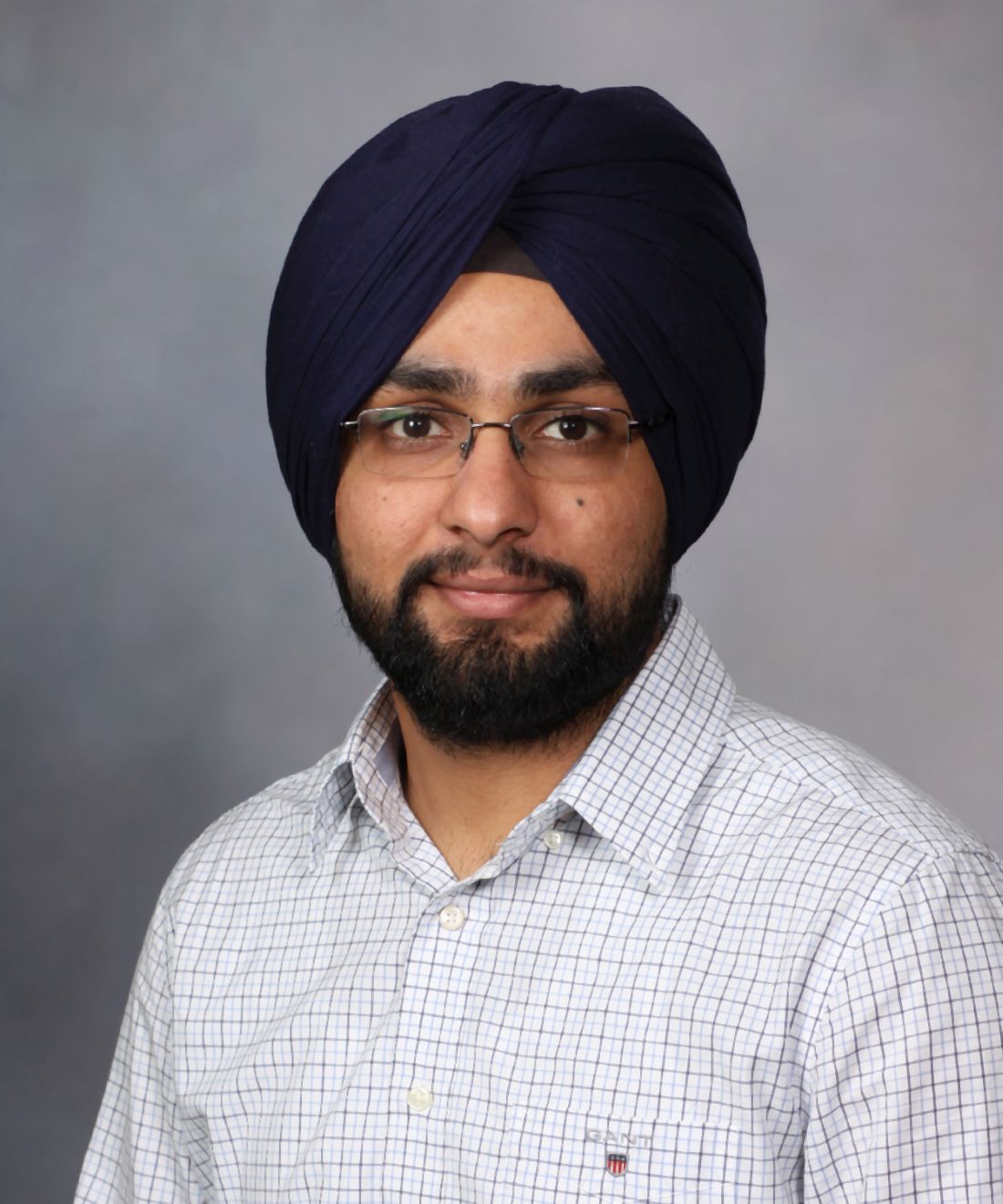User login
For patients with Barrett’s esophagus, surveillance endoscopy detects high-grade dysplasia (HGD) and esophageal adenocarcinoma (EAC) more often than previously reported, according to a retrospective analysis of more than 1,000 patients.
Neoplasia detection rate, defined as findings on initial surveillance endoscopy, was also lower than that observed in past studies, according to lead author Lovekirat Dhaliwal, MBBS, of Mayo Clinic, Rochester, Minn., and colleagues.
This study’s findings may help define quality control benchmarks for endoscopic surveillance of Barrett’s esophagus, the investigators wrote in Clinical Gastroenterology and Hepatology. Accurate metrics are needed, they noted, because almost 9 out of 10 patients with Barrett’s esophagus present with EAC outside of a surveillance program, which “may represent missed opportunities at screening.” At the same time, a previous study by the investigators and one from another group, have suggested that 25%-33% of HGD/EAC cases may go undetected by initial surveillance endoscopy.
“Dysplasia detection in [Barrett’s esophagus] is challenging because of its patchy distribution and often subtle appearance,” the investigators noted. “Lack of compliance with recommended biopsy guidelines is also well-documented.”
On the other hand, Dr. Dhaliwal and colleagues suggested that previous studies may not accurately portray community practice and, therefore, have limited value in determining quality control metrics. A 2019 review, for instance, reported a neoplasia detection rate of 7% among patients with Barrett’s esophagus, but this finding “is composed of data from largely referral center cohorts with endoscopy performed by experienced academic gastroenterologists,” they wrote, which may lead to overestimation of such detection.
To better characterize this landscape, the investigators conducted a retrospective analysis involving 1,066 patients with Barrett’s esophagus who underwent initial surveillance endoscopy between 1991 and 2019. Approximately three out of four surveillance endoscopies (77%) were performed by gastroenterologists, while the remaining were performed by nongastroenterologists, such as family practitioners or surgeons. About 60% of patients were adequately biopsied according to the Seattle protocol.
Analysis revealed that the neoplasia detection rate was 4.9% (95% confidence interval, 3.8%-6.4%), which is less than the previously reported rate of 7%. HGD was more common than EAC (33 cases vs. 20 cases). Out of 1,066 patients, 391 without neoplasia on initial endoscopy underwent repeat endoscopy within a year. Among these individuals, HGD or EAC was detected in eight patients, which suggests that 13% of diagnoses were missed on initial endoscopy, a rate well below the previously reported range of 25%-33%.
Technology challenged by technique
The neoplasia detection rate “appeared to increase significantly from 1991 to 2019 on univariate analysis (particularly after 2000), but this was not observed on multivariate analysis,” the investigators wrote. “This was despite the introduction of high definition monitors and high resolution endoscopes in subsequent years.
“This may suggest that in a low dysplasia prevalence setting, basic techniques such as careful white light inspection of the [Barrett’s esophagus] mucosa along with targeted and Seattle protocol biopsies may be more important,” they noted.
The importance of technique may be further supported by another finding: Gastroenterologists detected neoplasia almost four times as often as did nongastroenterologists (odds ratio, 3.6; P = .0154).
“This finding is novel and may be due to additional training in endoscopy, lesion recognition, and familiarity with surveillance guidelines in gastroenterologists,” the investigators wrote. “If this finding is replicated in other cohorts, it may support recommendations for the performance of surveillance by endoscopists trained in gastrointestinal endoscopy and well-versed in surveillance guidelines.
“[U]sing neoplasia detection as a quality metric coupled with outcome measures such as missed dysplasia rates could improve adherence to established biopsy protocols and improve the quality of care to patients,” they wrote. “Ultimately, this can be an opportunity to develop a high-value, evidence-based quality metric in [Barrett’s esophagus] surveillance.”
The authors acknowledged some limitations to their study. Its retrospective design meant no one biopsy protocol could be adopted across the entire study period; however, the results were “unchanged” when restricted to the period after introduction of the Seattle protocol in 2000. The study’s long period could have left results susceptible to changing guidelines, but the neoplasia detection rates remained relatively stable over time.
“Because prior reports consisted largely of tertiary care center cohorts, our findings may reflect the absence of referral bias and be more generalizable,” the investigators wrote.
The study was funded by the National Institute of Aging and the National Cancer Institute. The investigators disclosed relationships with Celgene, Nine Point Medical, Takeda, and others.
The current study by Dr. Dhaliwal and colleagues evaluates the neoplasia detection rate (NDR) for high-grade dysplasia (HGD) or esophageal adenocarcinoma (EAC) during surveillance endoscopy, which is a proposed novel quality metric for BE. Within a population cohort, the investigators found the NDR was 4.9%, and this did not increase significantly during the study period from 1991 to 2019. Gastroenterologists were more likely to report visible abnormalities during endoscopy and this was a significant predictor of neoplasia detection in a multivariable model. However, the overall rate of missed HGD or EAC was 13%, and this was not associated with procedural specialty. Interestingly, even with only 57% adherence to Seattle protocol in this study, there was no association with missed lesions.
Despite advances in endoscopic imaging and measures establishing quality for biopsy technique, there remains substantial room for improvement in the endoscopic management of patients with BE. While unable to evaluate all factors associated with neoplasia detection, the authors have provided an important real-world benchmark for NDR. Further study is needed to establish the connection between NDR and missed dysplasia, as well as its impact on outcomes such as EAC staging and mortality. Critically, understanding the role of specialized training and other factors such as inspection time to improve NDR is needed.
David A. Leiman, MD, MSHP, is the chair of the AGA Quality Committee. He is an assistant professor of medicine at Duke University, Durham, N.C., where he serves as director of esophageal research and quality. He has no conflicts.
The current study by Dr. Dhaliwal and colleagues evaluates the neoplasia detection rate (NDR) for high-grade dysplasia (HGD) or esophageal adenocarcinoma (EAC) during surveillance endoscopy, which is a proposed novel quality metric for BE. Within a population cohort, the investigators found the NDR was 4.9%, and this did not increase significantly during the study period from 1991 to 2019. Gastroenterologists were more likely to report visible abnormalities during endoscopy and this was a significant predictor of neoplasia detection in a multivariable model. However, the overall rate of missed HGD or EAC was 13%, and this was not associated with procedural specialty. Interestingly, even with only 57% adherence to Seattle protocol in this study, there was no association with missed lesions.
Despite advances in endoscopic imaging and measures establishing quality for biopsy technique, there remains substantial room for improvement in the endoscopic management of patients with BE. While unable to evaluate all factors associated with neoplasia detection, the authors have provided an important real-world benchmark for NDR. Further study is needed to establish the connection between NDR and missed dysplasia, as well as its impact on outcomes such as EAC staging and mortality. Critically, understanding the role of specialized training and other factors such as inspection time to improve NDR is needed.
David A. Leiman, MD, MSHP, is the chair of the AGA Quality Committee. He is an assistant professor of medicine at Duke University, Durham, N.C., where he serves as director of esophageal research and quality. He has no conflicts.
The current study by Dr. Dhaliwal and colleagues evaluates the neoplasia detection rate (NDR) for high-grade dysplasia (HGD) or esophageal adenocarcinoma (EAC) during surveillance endoscopy, which is a proposed novel quality metric for BE. Within a population cohort, the investigators found the NDR was 4.9%, and this did not increase significantly during the study period from 1991 to 2019. Gastroenterologists were more likely to report visible abnormalities during endoscopy and this was a significant predictor of neoplasia detection in a multivariable model. However, the overall rate of missed HGD or EAC was 13%, and this was not associated with procedural specialty. Interestingly, even with only 57% adherence to Seattle protocol in this study, there was no association with missed lesions.
Despite advances in endoscopic imaging and measures establishing quality for biopsy technique, there remains substantial room for improvement in the endoscopic management of patients with BE. While unable to evaluate all factors associated with neoplasia detection, the authors have provided an important real-world benchmark for NDR. Further study is needed to establish the connection between NDR and missed dysplasia, as well as its impact on outcomes such as EAC staging and mortality. Critically, understanding the role of specialized training and other factors such as inspection time to improve NDR is needed.
David A. Leiman, MD, MSHP, is the chair of the AGA Quality Committee. He is an assistant professor of medicine at Duke University, Durham, N.C., where he serves as director of esophageal research and quality. He has no conflicts.
For patients with Barrett’s esophagus, surveillance endoscopy detects high-grade dysplasia (HGD) and esophageal adenocarcinoma (EAC) more often than previously reported, according to a retrospective analysis of more than 1,000 patients.
Neoplasia detection rate, defined as findings on initial surveillance endoscopy, was also lower than that observed in past studies, according to lead author Lovekirat Dhaliwal, MBBS, of Mayo Clinic, Rochester, Minn., and colleagues.
This study’s findings may help define quality control benchmarks for endoscopic surveillance of Barrett’s esophagus, the investigators wrote in Clinical Gastroenterology and Hepatology. Accurate metrics are needed, they noted, because almost 9 out of 10 patients with Barrett’s esophagus present with EAC outside of a surveillance program, which “may represent missed opportunities at screening.” At the same time, a previous study by the investigators and one from another group, have suggested that 25%-33% of HGD/EAC cases may go undetected by initial surveillance endoscopy.
“Dysplasia detection in [Barrett’s esophagus] is challenging because of its patchy distribution and often subtle appearance,” the investigators noted. “Lack of compliance with recommended biopsy guidelines is also well-documented.”
On the other hand, Dr. Dhaliwal and colleagues suggested that previous studies may not accurately portray community practice and, therefore, have limited value in determining quality control metrics. A 2019 review, for instance, reported a neoplasia detection rate of 7% among patients with Barrett’s esophagus, but this finding “is composed of data from largely referral center cohorts with endoscopy performed by experienced academic gastroenterologists,” they wrote, which may lead to overestimation of such detection.
To better characterize this landscape, the investigators conducted a retrospective analysis involving 1,066 patients with Barrett’s esophagus who underwent initial surveillance endoscopy between 1991 and 2019. Approximately three out of four surveillance endoscopies (77%) were performed by gastroenterologists, while the remaining were performed by nongastroenterologists, such as family practitioners or surgeons. About 60% of patients were adequately biopsied according to the Seattle protocol.
Analysis revealed that the neoplasia detection rate was 4.9% (95% confidence interval, 3.8%-6.4%), which is less than the previously reported rate of 7%. HGD was more common than EAC (33 cases vs. 20 cases). Out of 1,066 patients, 391 without neoplasia on initial endoscopy underwent repeat endoscopy within a year. Among these individuals, HGD or EAC was detected in eight patients, which suggests that 13% of diagnoses were missed on initial endoscopy, a rate well below the previously reported range of 25%-33%.
Technology challenged by technique
The neoplasia detection rate “appeared to increase significantly from 1991 to 2019 on univariate analysis (particularly after 2000), but this was not observed on multivariate analysis,” the investigators wrote. “This was despite the introduction of high definition monitors and high resolution endoscopes in subsequent years.
“This may suggest that in a low dysplasia prevalence setting, basic techniques such as careful white light inspection of the [Barrett’s esophagus] mucosa along with targeted and Seattle protocol biopsies may be more important,” they noted.
The importance of technique may be further supported by another finding: Gastroenterologists detected neoplasia almost four times as often as did nongastroenterologists (odds ratio, 3.6; P = .0154).
“This finding is novel and may be due to additional training in endoscopy, lesion recognition, and familiarity with surveillance guidelines in gastroenterologists,” the investigators wrote. “If this finding is replicated in other cohorts, it may support recommendations for the performance of surveillance by endoscopists trained in gastrointestinal endoscopy and well-versed in surveillance guidelines.
“[U]sing neoplasia detection as a quality metric coupled with outcome measures such as missed dysplasia rates could improve adherence to established biopsy protocols and improve the quality of care to patients,” they wrote. “Ultimately, this can be an opportunity to develop a high-value, evidence-based quality metric in [Barrett’s esophagus] surveillance.”
The authors acknowledged some limitations to their study. Its retrospective design meant no one biopsy protocol could be adopted across the entire study period; however, the results were “unchanged” when restricted to the period after introduction of the Seattle protocol in 2000. The study’s long period could have left results susceptible to changing guidelines, but the neoplasia detection rates remained relatively stable over time.
“Because prior reports consisted largely of tertiary care center cohorts, our findings may reflect the absence of referral bias and be more generalizable,” the investigators wrote.
The study was funded by the National Institute of Aging and the National Cancer Institute. The investigators disclosed relationships with Celgene, Nine Point Medical, Takeda, and others.
For patients with Barrett’s esophagus, surveillance endoscopy detects high-grade dysplasia (HGD) and esophageal adenocarcinoma (EAC) more often than previously reported, according to a retrospective analysis of more than 1,000 patients.
Neoplasia detection rate, defined as findings on initial surveillance endoscopy, was also lower than that observed in past studies, according to lead author Lovekirat Dhaliwal, MBBS, of Mayo Clinic, Rochester, Minn., and colleagues.
This study’s findings may help define quality control benchmarks for endoscopic surveillance of Barrett’s esophagus, the investigators wrote in Clinical Gastroenterology and Hepatology. Accurate metrics are needed, they noted, because almost 9 out of 10 patients with Barrett’s esophagus present with EAC outside of a surveillance program, which “may represent missed opportunities at screening.” At the same time, a previous study by the investigators and one from another group, have suggested that 25%-33% of HGD/EAC cases may go undetected by initial surveillance endoscopy.
“Dysplasia detection in [Barrett’s esophagus] is challenging because of its patchy distribution and often subtle appearance,” the investigators noted. “Lack of compliance with recommended biopsy guidelines is also well-documented.”
On the other hand, Dr. Dhaliwal and colleagues suggested that previous studies may not accurately portray community practice and, therefore, have limited value in determining quality control metrics. A 2019 review, for instance, reported a neoplasia detection rate of 7% among patients with Barrett’s esophagus, but this finding “is composed of data from largely referral center cohorts with endoscopy performed by experienced academic gastroenterologists,” they wrote, which may lead to overestimation of such detection.
To better characterize this landscape, the investigators conducted a retrospective analysis involving 1,066 patients with Barrett’s esophagus who underwent initial surveillance endoscopy between 1991 and 2019. Approximately three out of four surveillance endoscopies (77%) were performed by gastroenterologists, while the remaining were performed by nongastroenterologists, such as family practitioners or surgeons. About 60% of patients were adequately biopsied according to the Seattle protocol.
Analysis revealed that the neoplasia detection rate was 4.9% (95% confidence interval, 3.8%-6.4%), which is less than the previously reported rate of 7%. HGD was more common than EAC (33 cases vs. 20 cases). Out of 1,066 patients, 391 without neoplasia on initial endoscopy underwent repeat endoscopy within a year. Among these individuals, HGD or EAC was detected in eight patients, which suggests that 13% of diagnoses were missed on initial endoscopy, a rate well below the previously reported range of 25%-33%.
Technology challenged by technique
The neoplasia detection rate “appeared to increase significantly from 1991 to 2019 on univariate analysis (particularly after 2000), but this was not observed on multivariate analysis,” the investigators wrote. “This was despite the introduction of high definition monitors and high resolution endoscopes in subsequent years.
“This may suggest that in a low dysplasia prevalence setting, basic techniques such as careful white light inspection of the [Barrett’s esophagus] mucosa along with targeted and Seattle protocol biopsies may be more important,” they noted.
The importance of technique may be further supported by another finding: Gastroenterologists detected neoplasia almost four times as often as did nongastroenterologists (odds ratio, 3.6; P = .0154).
“This finding is novel and may be due to additional training in endoscopy, lesion recognition, and familiarity with surveillance guidelines in gastroenterologists,” the investigators wrote. “If this finding is replicated in other cohorts, it may support recommendations for the performance of surveillance by endoscopists trained in gastrointestinal endoscopy and well-versed in surveillance guidelines.
“[U]sing neoplasia detection as a quality metric coupled with outcome measures such as missed dysplasia rates could improve adherence to established biopsy protocols and improve the quality of care to patients,” they wrote. “Ultimately, this can be an opportunity to develop a high-value, evidence-based quality metric in [Barrett’s esophagus] surveillance.”
The authors acknowledged some limitations to their study. Its retrospective design meant no one biopsy protocol could be adopted across the entire study period; however, the results were “unchanged” when restricted to the period after introduction of the Seattle protocol in 2000. The study’s long period could have left results susceptible to changing guidelines, but the neoplasia detection rates remained relatively stable over time.
“Because prior reports consisted largely of tertiary care center cohorts, our findings may reflect the absence of referral bias and be more generalizable,” the investigators wrote.
The study was funded by the National Institute of Aging and the National Cancer Institute. The investigators disclosed relationships with Celgene, Nine Point Medical, Takeda, and others.
FROM CLINICAL GASTROENTEROLOGY AND HEPATOLOGY


